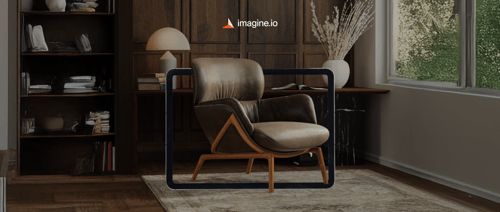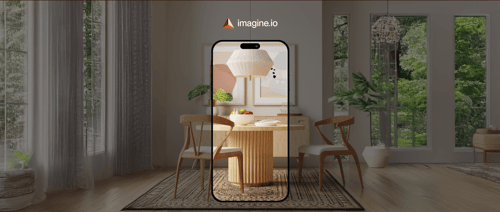Imagine a shopper in a sleek Los Angeles showroom, designing a custom sofa on a touchscreen swapping fabrics, adjusting stitching, and seeing the result in seconds. Or picture a fashion lover in Toronto, crafting a one-of-a-kind t-shirt from their phone, tweaking colors and patterns with a tap. This is the new reality of textile retail, where product configurators powered by 3D and AI technology are revolutionizing how brands connect with customers. From Austin to New York, these tools are simplifying customization, boosting sales, and slashing costs for retailers across the United States and Canada.
The Power of Personalization in Textile Retail
Today's shoppers don't just want products they want products that feel uniquely theirs. Whether it's a bespoke rug from Ruggable or a tailored mattress from Serta Simmons, personalization has become a cornerstone of modern retail. A 2024 McKinsey report highlights that personalized experiences foster loyalty and drive revenue by offering tailored interactions that competitors struggle to replicate. In textile retail, spanning home décor and fashion, this demand for individuality is reshaping how brands operate.
The solution lies in digital transformation. Advanced 3D and AI-driven platforms like imagine.io allow retailers to offer real-time previews of fabrics, finishes, and designs. Unlike traditional photoshoots that require physical samples and weeks of production, these tools generate photorealistic visuals instantly. For brands in competitive hubs like Chicago or Dallas, this agility is a lifeline, enabling them to meet customer expectations without the hefty price tag of conventional methods.
Trends Reshaping Textile Customization
Gone are the days of static catalogs and limited swatch books. Retailers are embracing interactive configurators that let customers mix and match fabrics, colors, and patterns in real time. A shopper in Las Vegas can visualize a velvet armchair in emerald green, complete with piping details, before ever placing an order. Platforms like imagine.io deliver visuals so precise that eCommerce leaders can't distinguish them from professional photoshoots, ensuring quality that rivals traditional methods.
Cloud-based rendering is the engine behind this shift. Retailers simply upload a 3D model, and within minutes, they can generate images, videos, 360-degree spins, or fully interactive configurators. This speed is a game-changer for brands like Kohler or Hunter Fan, which manage sprawling product catalogs. Unlike competitors focused on a single format, imagine.io's all-in-one platform supports every visual style, empowering retailers to scale effortlessly across high-SKU inventories.
These tools also bridge the gap between online and offline. Configurators integrate seamlessly across eCommerce sites, in-store kiosks, and mobile apps, creating a unified experience. A customer in High Point can start designing a rug on Instagram, refine it in-store, and finalize it on their phone. This omnichannel approach, visible on platforms like LinkedIn and YouTube, keeps shoppers engaged no matter where they are.
Success Stories: Customization in Action
Textile configurators are delivering measurable results. In home décor, brands like Ruggable use 3D tools to let customers preview custom rugs, boosting purchase confidence and reducing returns. A Chicago buyer can see how a shag rug looks in their space, minimizing the risk of costly mismatches. Similarly, mattress brands like King Koil leverage configurators to showcase fabric and firmness options, helping customers make informed choices.
In fashion, the impact is equally striking. The global custom t-shirt printing market, valued at $5.16 billion in 2024, is set to reach $9.82 billion by 2030, growing at a CAGR of 11.5% Grandview Research, 2024. Retailers are using configurators to preview seasonal lines, allowing customers to experiment with colors, embroidery, or logos before production. This not only accelerates design cycles but also taps into the growing demand for personalized apparel, particularly in Asia Pacific, which commands a 39.4% revenue share.
Major brands like Kichler and Maytag are embedding configurators into their marketplaces, offering customers hands-on ways to explore variations. By showcasing these tools on social platforms like Facebook or brand sites like kitchenaid.com, they're meeting customers in their preferred spaces, driving engagement and sales.
Overcoming Adoption Hurdles
Despite the benefits, some retailers hesitate to adopt configurators. Subscription-based pricing, like imagine.io's custom plans, can seem complex compared to competitor's one-off fees. Yet, for brands with extensive catalogs, the ability to create unlimited assets offers unmatched value, far outweighing the cost of traditional photoshoots, which can cost thousands per product.
Another challenge is the technology learning curve. Retailers in markets like New York, accustomed to established agency workflows, may resist 3D tools. However, platforms like imagine.io are intuitive, requiring only a model upload to produce assets in minutes. Training teams in Los Angeles or Canada is straightforward, unlocking efficiencies that legacy methods can't match.
Consistency across channels is a final concern. A fabric swatch on Serta Simmon's website must look identical on Instagram or in a Las Vegas showroom. Imagine.io's platform ensures uniformity, delivering visuals that maintain quality across web, social media, and in-store displays, addressing this pain point head-on.
Addressing Pricing Concerns
Subscription models can raise eyebrows, especially for retailers used to project-based pricing. However, the scalability of platforms like imagine.io offering unlimited asset creation makes them cost-effective for high-volume catalogs. A single photoshoot for a furniture line can cost upwards of $10,000, while configurators deliver endless variations at a fraction of the cost.
Easing Technology Adoption
For retailers wary of new workflows, the simplicity of cloud-based platforms is a selling point. Imagine.io's interface is designed for speed, allowing teams to generate assets without extensive training. This accessibility is critical for brands in fast-moving markets like Austin or Chicago, where agility drives competitiveness.
The Business Impact: Efficiency and Engagement
Configurators are a financial win. By eliminating physical samples and reshoots, they slash studio costs dramatically. A single 3D model can generate countless variations, saving brands like PepsiCo or Diageo thousands on product launches. In 2022, the fashion industry showed resilience, with luxury brands achieving a 36% rise in economic profit despite market challenges McKinsey, 2024. Configurators help retailers stay nimble, delivering fresh visuals to capitalize on trends.
Engagement is another boon. Interactive tools increase dwell time and purchase confidence, as customers experiment with designs and see instant results. McKinsey's 2024 research underscores that personalized experiences create a competitive edge, fostering loyalty and boosting sales. For textile retailers, this translates to happier customers and stronger margins.
The Future of Textile Retail
The textile retail landscape is evolving, and configurators are at the forefront. As AI-driven tools expand across the U.S. and Canada, from Dallas to Vancouver, early adopters will gain a decisive advantage. Grandview Research forecasts robust growth in custom textiles, driven by demand for unique, made-to-order products. Retailers who integrate configurators now whether for rugs, mattresses, or apparel will set the pace in a personalization-first market.
The path forward is clear: start small, pilot a configurator on a single product line, and watch the results roll in. Faster production, lower costs, and delighted customers await. In an era where individuality reigns, platforms like imagine.io are empowering textile retailers to not just compete but lead with confidence.
Frequently Asked Questions
How do product configurators work for textile customization in retail?
Product configurators use 3D and AI technology to let customers design custom textile products in real-time through interactive touchscreens or mobile apps. Retailers upload a 3D model to cloud-based platforms, and customers can instantly swap fabrics, colors, patterns, and other design elements while seeing photorealistic previews. This eliminates the need for physical samples and traditional photoshoots, allowing brands to generate unlimited product variations at a fraction of traditional costs.
What are the main benefits of using textile configurators for retail businesses?
Textile configurators deliver significant cost savings by eliminating expensive photoshoots and physical samples, with traditional shoots costing upwards of $10,000 compared to configurators that generate endless variations affordably. They boost customer engagement and purchase confidence by allowing real-time customization and instant visual feedback. Additionally, configurators reduce returns by helping customers visualize exactly how products will look, while enabling retailers to respond quickly to trends and scale across high-SKU inventories.
Which textile retail sectors are successfully using product configurators?
Product configurators are thriving across multiple textile sectors, including home décor brands like Ruggable for custom rugs and mattress companies like Serta Simmons for fabric and firmness options. The fashion industry is also seeing major growth, with the custom t-shirt printing market expected to reach $9.82 billion by 2030. Major brands like Kichler, Maytag, and KitchenAid have integrated configurators into their marketplaces, allowing customers to explore fabric variations, colors, and design elements before making purchases.
Disclaimer: The above helpful resources content contains personal opinions and experiences. The information provided is for general knowledge and does not constitute professional advice.
You may also be interested in: 3D Appliance Visualization – Imagine.io
Struggling with expensive, outdated product visuals that slow down your creative process and stunt eCommerce growth? imagine.io's AI-powered platform empowers furniture, home décor, and textile brands to effortlessly produce striking 3D images, immersive videos, AR experiences, and interactive configurators. Cut production costs up to 70%, boost conversions 5X, speed up prototyping, and supercharge your online sales. Ready to elevate your product visuals and captivate customers? Book a demo with imagine.io today!
Powered by flareAI.co




.png?width=500&name=How%20to%20Add%20a%203D%20Product%20Configurator%20to%20Your%20WordPress%20Website%20(Complete%20B2B%20Guide).png)
















%20(1).png?width=500&name=Why%20Exploded%20Mattress%20Views%20Matter%20(And%20How%20to%20Generate%20Them)%20(1).png)
.png?width=500&name=Best%20Shopify%20Product%20Configurator_%20How%20to%20Choose%20the%20Right%20One%20(2).png)
.png?width=500&name=Why%20Exploded%20Mattress%20Views%20Matter%20(And%20How%20to%20Generate%20Them).png)



.png?width=500&name=Best%20Shopify%20Product%20Configurator_%20How%20to%20Choose%20the%20Right%20One%20(1).png)







.png?width=500&name=How%203D%20Rendering%20Can%20Make%20or%20Break%20Your%20Industrial%20Design%20Pitch%20(1).png)








%20with%20Digital%20Twins%20and%203D%20Visualization.png?width=500&name=Optimizing%20Your%20Digital%20Asset%20Management%20(DAM)%20with%20Digital%20Twins%20and%203D%20Visualization.png)




.png?width=500&name=Styling%20Home%20Decor%20for%202025_%20From%20Global%20Influences%20to%20Playful%20Personalization%20(1).png)
